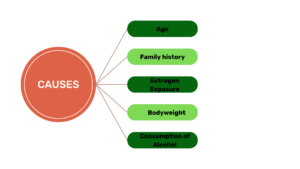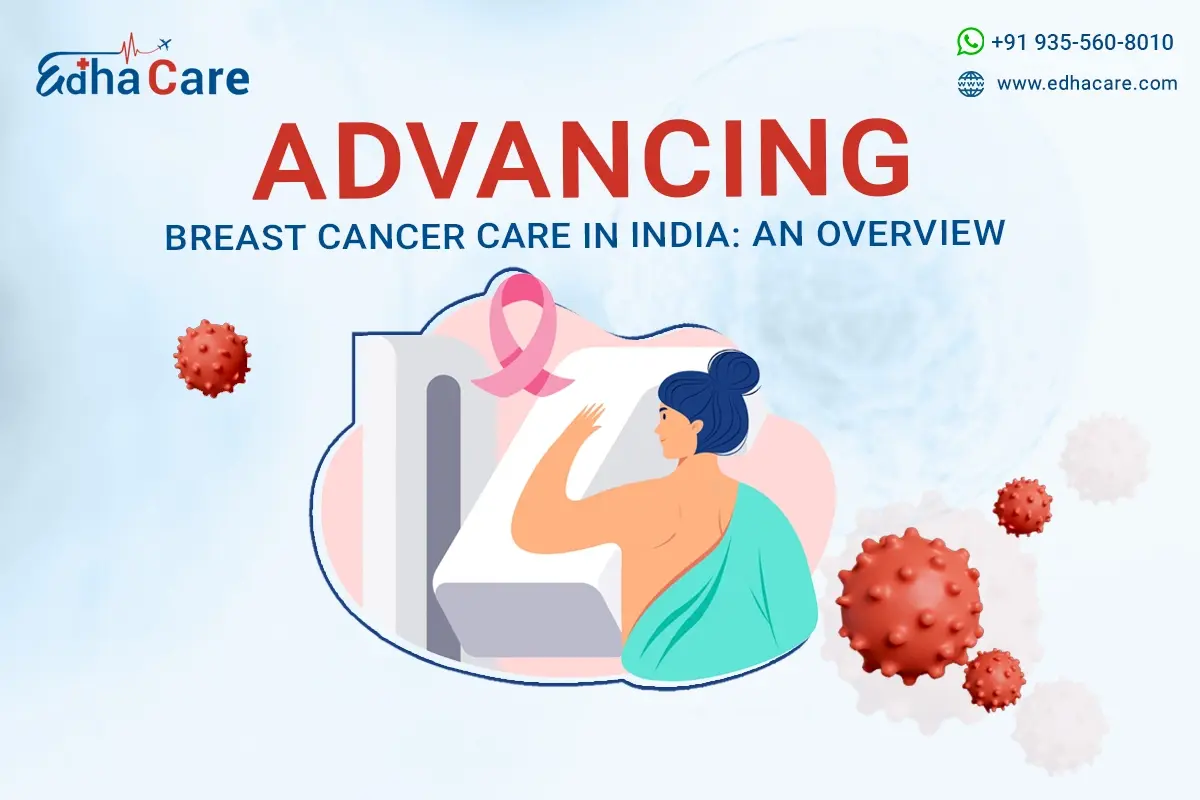Breast cancer is one such disease that is commonly observed in India and in worldwide. Over the years, significant strides have been made in the field of breast cancer treatment, leading to improved outcomes and better quality of life for patients.
There are varied treatment types that are developed and are still developing to cure this treatment condition. Collaboration among oncologists, surgeons, radiologists, geneticists, and other healthcare professionals is crucial to develop and implement comprehensive treatment plans.
With ongoing research, technological advancements, and a patient-centered approach, These treatments continue to progress, offering hope for better outcomes and improved quality of life for those affected by this disease.
What is Breast Cancer?
When the lobules or ducts become mutated, breast cancer occurs. This is a type of cancer that develops in the breast cells.
The second most prevalent cancer in women to be diagnosed in the United States is breast cancer. Both men and women can develop this condition, but women are much more likely to do so.
This condition can be classified according to the size of the tumor and the speed at which it travels throughout the body. Large cancers that have spread to most of the body’s organs will be categorized in higher stages.
Do you know about its prevalence rates?
As the most prevalent disease diagnosed globally, female breast cancer has now surpassed lung cancer. In 2020, there were reportedly 2,261,419 new cases of this disease in women worldwide.
This is the type of cancer that affects more women in the US than any other, with the exception of skin cancer. Every year, 1 in 3 new cases of female cancer are caused by the condition.
In the United States, it is anticipated that 297,790 women will receive an invasive breast cancer diagnosis in 2023, while 55,720 women will receive an in situ (non-invasive) breast cancer diagnosis.
In the United States, there are currently more than 3.8 million women who have breast cancer or have survived it.
What is the survival rate for breast cancer?
Doctors can assess a patient’s likelihood of surviving breast cancer using a variety of statistics. These are referred to as survival rates. The relative survival rate is a particular kind of survival statistic.
It is frequently used to forecast potential life expectancy effects of cancer. The relative survival rate examines the likelihood that someone with breast cancer would live a specific amount of time following their first diagnosis or the beginning of therapy in comparison to the anticipated survival of individuals with similar characteristics who do not have this cancer.
What are its causes?
There are different causes of breast cancer that exist but among all, there are a few that need to be discussed as they are most commonly found in patients.

- Age: The risk factors of this cancer increase with age with women over the age of 50 years.
- Family history: Women who carry certain mutations in the BRCA1 and BRCA2 genes have higher chances of getting caught with breast cancer, ovarian cancer, or both. People take over these genes from their parents.
- Estrogen Exposure: Estrogen exposure could accelerate because of people having their periods earlier or entering menopause at a later age.
- Bodyweight: Women who are overweight or develop obesity after menopause also have a higher chance of developing breast cancer.
- Consumption of Alcohol: Women who consume alcohol in a moderate to higher level have an increased risk of breast cancer.
What are the treatment types?
Determining a treatment strategy should primarily depend on the cancer’s stage, metastasis extent, and tumor size. The doctor will first ascertain the size, stage, and grade of the cyst as well as other information about your malignancy.
Once the specifics are known, they will talk about the best course of action; surgery is typically the best course of action for this condition. The majority of women participate in further therapies such chemo, radiation, targeted therapy, or hormone therapy.
-
Surgery Options in Breast Cancer:
Here are some of the common surgery options in breast cancer treatments:
- Lumpectomy- This process involves extracting the tumor and the infected surrounding tissues, it leaves the rest of the breast intact
- Mastectomy- This procedure is about removing the entire breast, in a double mastectomy both the breasts are removed
- Sentinel node biopsy- This includes removing a few lymph nodes that are affected by the tumor and they are tested for cancerous cells. If you don’t have cancer then more lymph nodes are not extracted.
- Axillary lymph node dissection- If the lymph nodes extracted during the Sentinel node biopsy are tested positive for cancer, then the oncologist will have to remove more lymph nodes.
- Contralateral prophylactic mastectomy- This process involves removing the healthy breast to prevent the spread of cancer.
-
Radiation Therapy for Breast Cancer:
Radiation therapy employs high-powered beams to target and eliminate the cancer cells responsible for the breast tumor. The majority of treatments involve external beam radiation, utilizing a significant technique on the body’s exterior.
With the use of brachytherapy, a type of radiation therapy made possible by recent advancements in cancer treatment, physicians can now utilize radiation to completely remove cancer from within the body.
In order to do this, surgeons will insert radioactive pellets close to the tumor location into the body, where they will stay for a brief time and continue to operate on cell death.
-
Hormone therapy:
The oncologist will advise hormone therapy if your cancer is hormone-sensitive. Estrogen and progesterone, two essential female hormones, promote the development of breast cancer tumors.
Hormone treatment slows or stops the progression of cancer by blocking the body’s production of hormones.
-
Medication:
Certain medications are formulated to target abnormalities or mutations within cancer cells. For example, Herceptin inhibits the body’s HER2 protein production. This protein fuels the growth of these cells, and the medication curbs HER2 production, thereby decelerating cancer growth.
Cost of Breast Cancer Treatment in India
There are different costs for multiple breast cancer treatments In India. The cost varies on the treatment type.
The cost of this treatment in India can vary widely depending on several factors such as the stage of cancer, the type of treatment required, the hospital’s location, and the patient’s overall health.
For advanced stages, costs can escalate significantly due to the inclusion of chemotherapy, hormone therapy, and additional interventions.
High-end private hospitals in metropolitan cities like Mumbai, Delhi, and Bangalore might charge higher prices compared to hospitals in smaller cities. Government and charitable hospitals often provide more affordable options.
| Price Range Status | Cost |
| Minimum price | INR Rs.86,000 |
| Average price | INR Rs.7,00,000 |
| Maximum price | INR Rs.16,50,000 |
However, the cost of Breast Cancer Treatment in India may vary depending on the following few factors:
- Admission fee
- Oncologist fee
- Age of the patient
- The severity of breast cancer
- The medical condition of the patient
- Type of Breast Cancer Treatment planned to be performed
- Post-procedure complications that are involved
- Type of hospital
- The admission room that you opted for
- Any other lab tests or examination tests such as X-ray, ECG, etc.
Considering the above factors, the cost for treating mammary carcinoma in India ranges from USD 1300 to USD 23,500, while the same surgery in the US costs about USD 125,000.
Summary
In conclusion, breast cancer treatment in India encompasses a diverse range of costs influenced by variables such as disease stage, treatment modalities, hospital location, and patient preferences.
While early-stage treatment expenses typically range from INR 2-4 lakhs, advanced-stage cases can incur higher costs due to intensified interventions like chemotherapy and hormone therapy.
High-end private hospitals in metropolitan areas show variation compared to more affordable choices in smaller cities, including government and charitable institutions.
Moreover, ancillary expenses like diagnostic tests and post-treatment care must be factored in.

